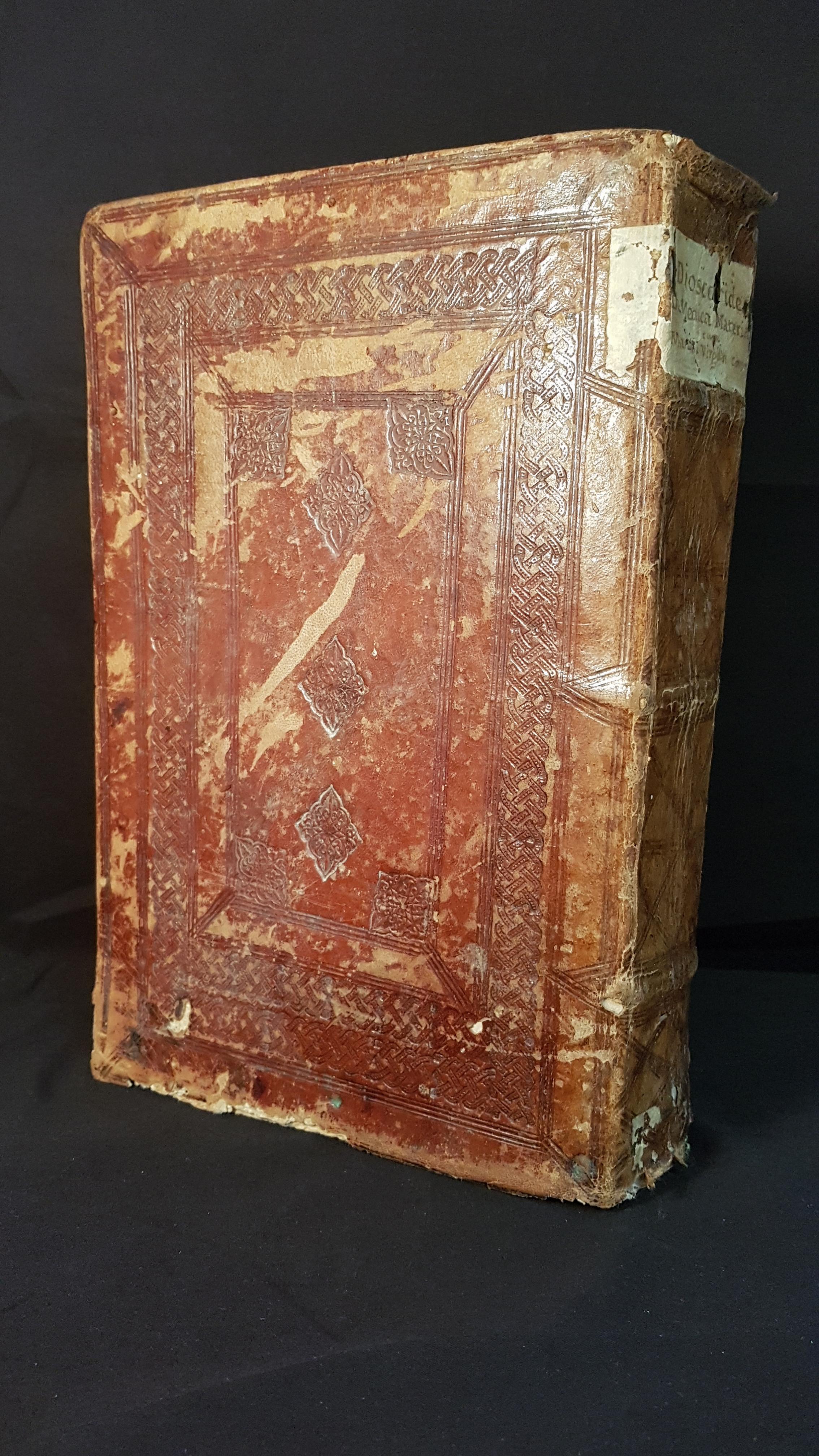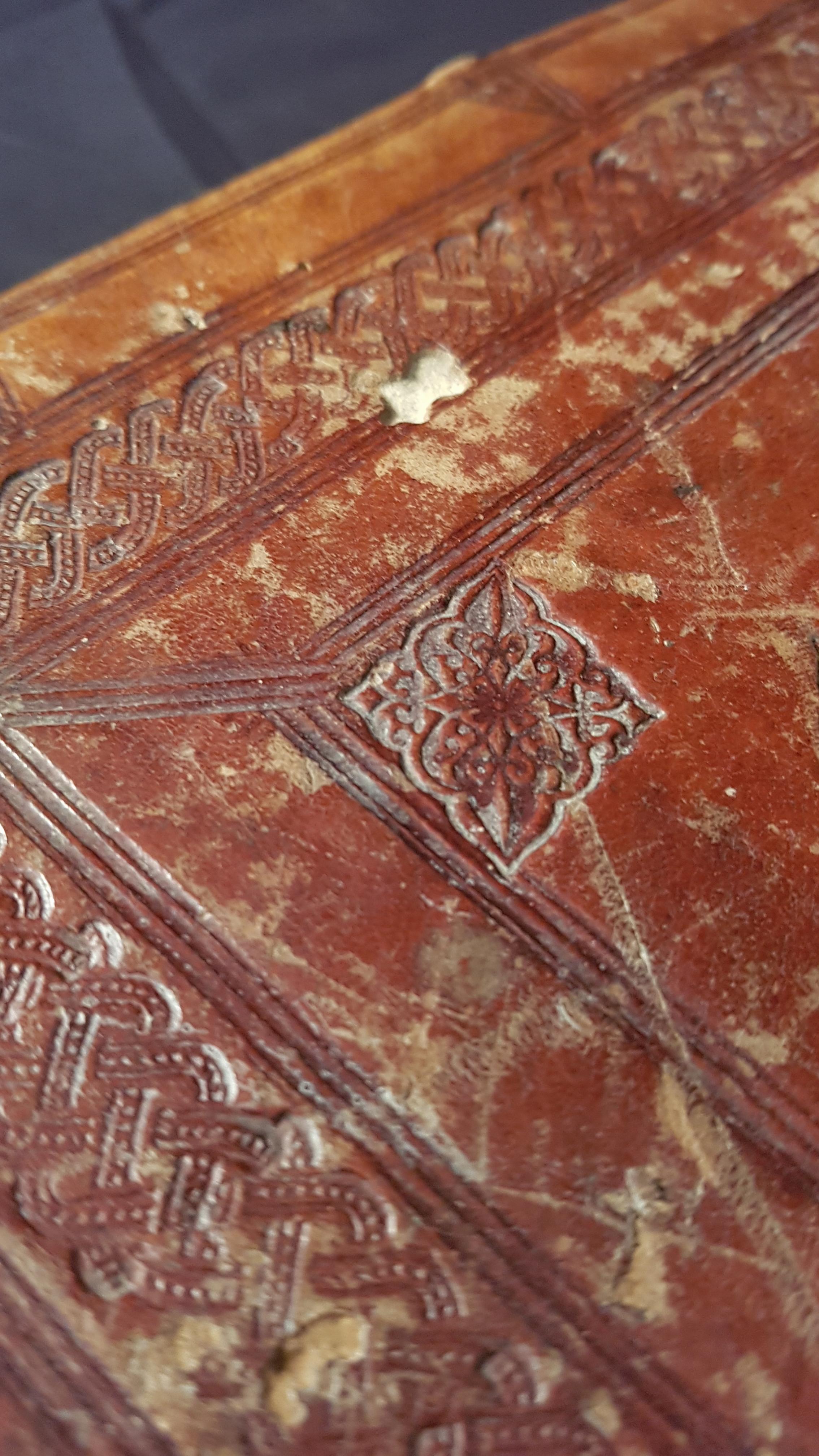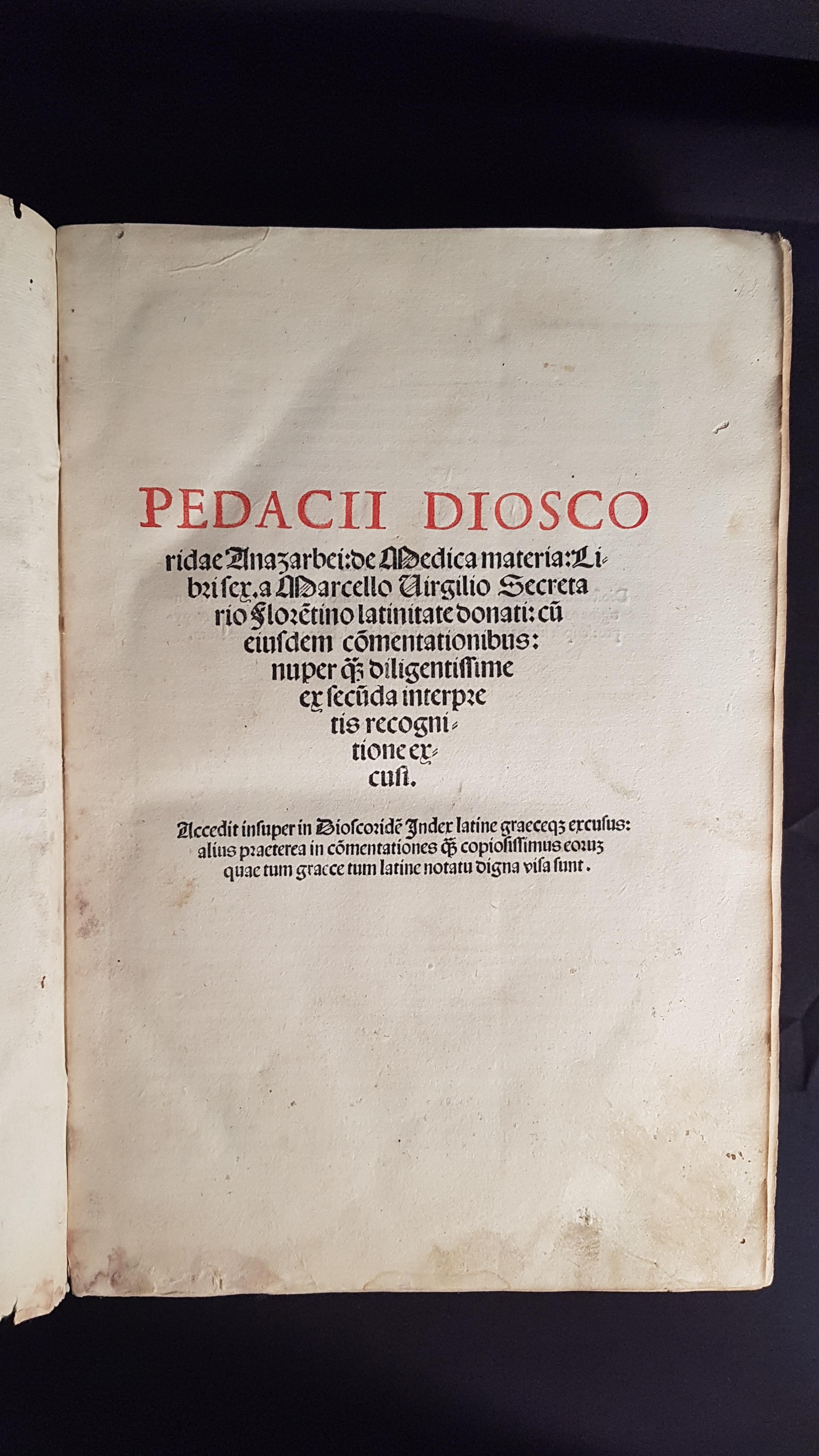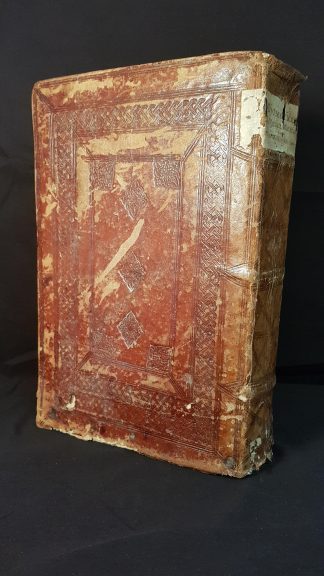DIOSCORIDES
IMPRESSIVE CONTEMPORARY BINDING
Pedacii Dioscoridae Anazarbei de Medica materia libri sex.
Florence, Filippo Giunta, 1523£12,500.00
Folio. ff. (x) 352. Roman letter, some Greek. Title in red and black, woodcut printer’s device to recto of last. T-p a bit thumbed, small faint purplish stain and little fraying to lower inner corner of first and last gathering, occasional slight marginal waterstaining, and minor marginal foxing. A very good copy, on thick paper, in contemporary northern Italian calf over pasteboards, lacking ties, triple blind tooled to a panel design, second border with dotted ropework, centre panel with rhombus-shaped floral centre- and cornerpieces. Spine in four compartments with double blind tooled hatching, early paper label with title at head, some rubbing, minor loss to covers and at foot of spine.
A handsome copy of this fundamental ancient Greek work on herbal medicine—the first pharmacopoeia—which influenced Western medical practice until the C19. The work had been circulating in Latin (as well as Greek and Arabic) throughout the medieval period, never falling into oblivion. It was first printed by Filippo Giunta in 1518, in a Latin translation and commentary by the Florentine humanist and Medici chancellor Marcello Virgilio Adriani (1464-1521), of which this is the second edition. Born in Cilicia, Discorides (40-90AD) was a Greek physician at the service of the Roman army and an expert botanist. A compendium of medical knowledge which rivalled Hippocrates’s and Oribasius’s works, ‘De Materia medica’ discusses the properties and medical uses of hundreds of herbs all typical of the eastern Mediterranean region, often providing their names in other languages like Thracian, ancient Egyptian or Carthaginian. Its five parts cover a variety of topics including not only aromatic or culinary herbs and plants (e.g., cardamom, cinnamon, liquorice and valerian) but also cereals, fruit, roots, seeds and even minerals from which ointments, drinks or balms can be made. The short sections discuss the name, origins, physical characteristics and medical uses of each; room is also devoted to specific conditions, their symptoms and the best practice and medicaments to treat them. To the bite of adders, vipers and basilisks, for instance, is devoted a long section which explains how to intervene in case of emergency and how to prepare and use life-saving pharmacopoeia including cedar juice, bitumen and green ‘pilulae’ made from plane trees cooked in diluted wine.
Four copies recorded in the US.USTC 827007; BM STC It., p. 218; NLM 1142. Not in Wellcome or Bibliotheca Osleriana.In stock





